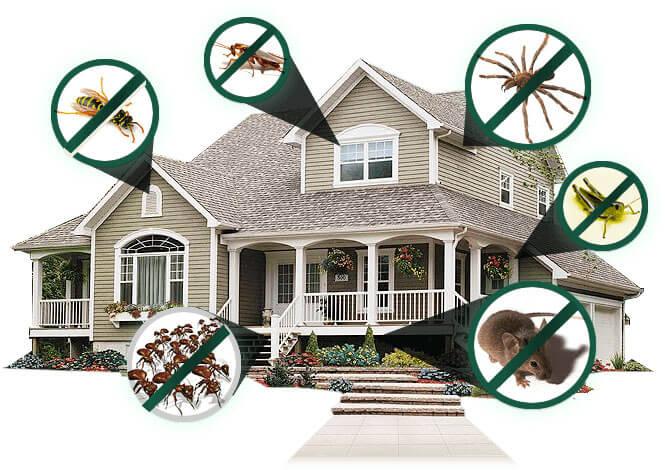Bed Pest Treatment Breakdown: Comparing Chemical Vs. Non-Chemical Solutions
In the world of insect control, particularly when managing the persistent concern of bed bugs, the option between chemical and non-chemical treatment remedies can be a critical one. Both methods offer unique advantages and disadvantages, affecting factors such as performance, safety factors to consider, and overall cost. By examining the nuanced details of each technique, a more clear understanding of which path to go after in resolving a bed insect problem can be attained.
Effectiveness of Chemical Treatments
Chemical therapies for bed pest problems have been commonly identified for their rapid and powerful efficiency in getting rid of these insects. When considering the effectiveness of chemical treatments, it is crucial to understand that they can provide a thorough and quick option to a bed pest trouble. Specialist exterminators frequently rely upon insecticides to target bed pests at various stages of their life cycle, including eggs, fairies, and grownups. These chemicals usually work by interrupting the bed pests' nerves, causing paralysis and ultimate death.
Moreover, chemical therapies have the advantage of offering recurring impacts, suggesting that they can remain to eliminate bed pests even after the preliminary application. This residual activity is particularly advantageous in combating any prospective re-infestations. In addition, the fast action of chemical treatments can bring relief to individuals dealing with severe bed insect invasions, permitting them to gain back control of their home promptly.
Safety Worry About Chemical Solutions
One vital element that needs careful factor to consider when using chemical options for bed bug treatment is making certain the safety of passengers and the setting. Direct exposure to particular chemicals made use of in bed insect therapies can lead to respiratory system problems, skin irritation, or various other unfavorable responses, specifically in individuals with pre-existing problems or sensitivities.
In addition, the environmental influence of chemical services is another substantial consideration. Some pesticides used in bed bug therapies may be dangerous to helpful bugs, wild animals, and communities if they seep into the dirt or water systems. It is important to utilize chemical therapies judiciously, adhering to safety guidelines, and taking into consideration less poisonous options to minimize these risks and make sure the reliable and secure management of bed insect problems.
Benefits of Non-Chemical Techniques
Considering the prospective security concerns and environmental effect related to chemical solutions for bed pest treatment, discovering non-chemical methods provides an encouraging alternative with a number of unique advantages. Non-chemical approaches provide a more secure alternative for homes, particularly those with individuals, kids, or family pets delicate to severe chemicals. These strategies remove the threats of direct exposure to poisonous materials, decreasing the capacity for unfavorable wellness impacts. Furthermore, non-chemical treatments are ecologically pleasant, as they do not add to air or water air pollution, making them a lasting option for insect control.
Additionally, non-chemical options can be efficient in targeting bed insects, including hard-to-reach locations where chemical treatments may not penetrate - A1 charlotte pest control companies. Methods such as warmth treatment, vacuuming, steam cleaning, and mattress encasements supply my company extensive obliteration without the use of dangerous chemicals.
Limitations of Non-Chemical Treatments

In addition, non-chemical treatments usually require numerous applications to attain successful removal. This can be taxing and may not always assure total removal of all bed insects and their eggs, specifically in hard-to-reach or hidden areas.
Moreover, the best site success of non-chemical therapies heavily counts on correct implementation and thoroughness, which can be challenging for individuals without professional competence. Insufficient application of non-chemical techniques might cause incomplete removal, bring about consistent infestations and the demand for additional treatments.
For that reason, while non-chemical treatments have their advantages, it is vital to acknowledge these restrictions and consider them when determining the most effective technique for taking care of bed pest problems.
Expense Comparison: Chemical Vs. Non-Chemical Options
Provided the limitations connected with non-chemical therapies, an essential facet to evaluate in the context of bed bug management is the price contrast between chemical and non-chemical choices. Chemical treatments usually include the application of insecticides by experts, which can range from $250 to $900 per room, depending on the extent of the problem and the dimension of the location to be dealt with. In comparison, non-chemical treatments like warmth therapy or steam can be a lot more pricey, with prices ranging from $1,000 to $6,000 for an entire home. While the preliminary expense of chemical treatments might appear lower, several therapies may be called for to completely eliminate the invasion, potentially increasing the total expense. On the other hand, non-chemical alternatives might offer a more environmentally friendly and sustainable have a peek at this website remedy, although they can be cost-prohibitive for some people. Eventually, when thinking about the cost of bed bug therapy choices, it is essential to consider the upfront costs versus the effectiveness and long-term sustainability of the selected method.
Conclusion

Thinking about the possible safety worries and environmental effect linked with chemical services for bed insect therapy, exploring non-chemical approaches presents a promising option with numerous unique benefits.Provided the restrictions linked with non-chemical treatments, a necessary facet to assess in the context of bed insect monitoring is the price contrast in between chemical and non-chemical choices. In comparison, non-chemical treatments like heat treatment or heavy steam can be a lot more expensive, with costs ranging from $1,000 to $6,000 for an entire home. While the preliminary expense of chemical therapies might appear lower, multiple treatments may be called for to completely eradicate the invasion, potentially enhancing the general expense.In verdict, when contrasting chemical and non-chemical bed pest therapy choices, it is important to take into consideration performance, safety and security, advantages, constraints, and price.